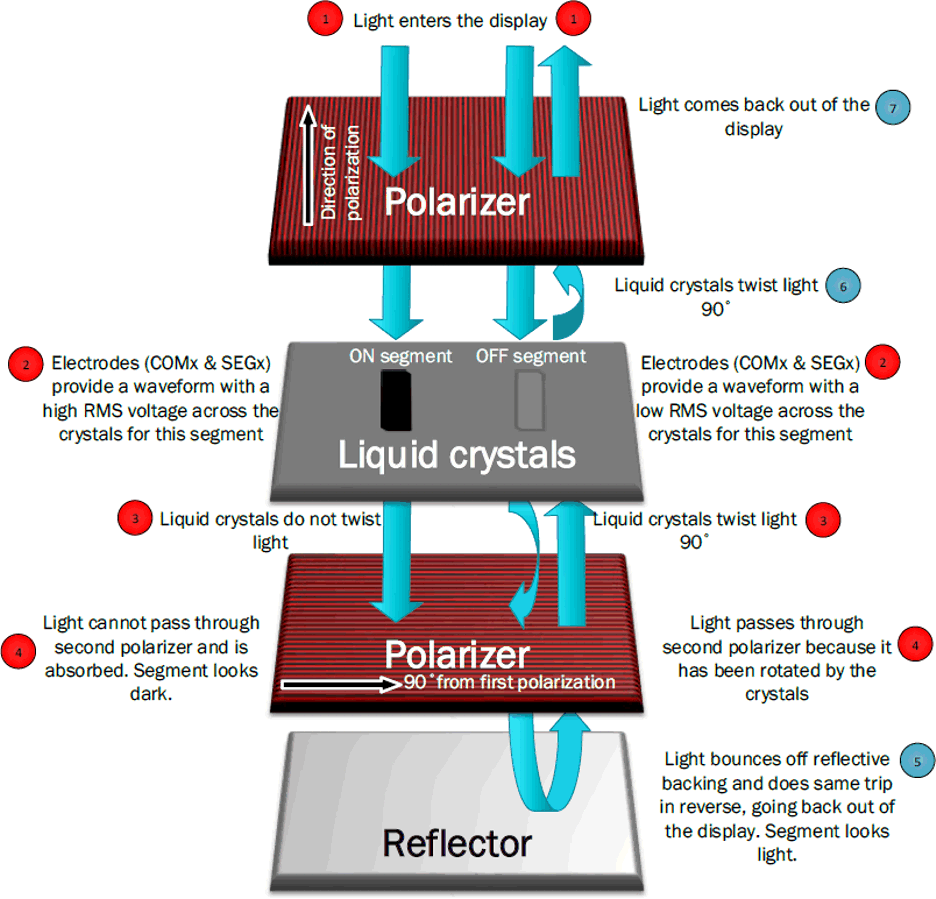SLAAEO3 September 2024 MSPM0L2227 , MSPM0L2228
3.1 LCD Structure (Simplified)
Figure 3-1 shows a simplified version of the structure of a segment LCD display. The display consists of two polarizers rotated 90 degrees from each other to polarize light coming into the display, liquid crystals between the polarizers with electrodes to apply a charge, and a reflective backing to reflect light that gets through all the layers of the display.
 Figure 3-1 Segmented LCD Structure and Theory
Figure 3-1 Segmented LCD Structure and TheoryWhen no charge is applied to the electrodes for a particular segment, the segment is "off," or gray. In this normal state, the liquid crystals have a twisted structure that turns the light 90 degrees. First, when no charge is applied, light comes in the first polarizer and emerges polarized in one direction. Then, the crystals turn the light 90 degrees as the crystals pass through the light - which allows the light to be able to pass through the second polarizer because, the second polarizer is rotated compared to the first polarizer. Finally, the light reflects off of the reflective backing and does the same path in reverse. Because the light is reflected back, the LCD segment appears light or gray.
When a charge is applied to the electrodes for a segment, the segment is "on," or black. In the charged state, the crystals untwist, so they do not turn the light and let the light passes through directly. First, when a charge is applied, light comes in the first polarizer and emerges polarized in one direction. Then, the crystals simply allow the light to pass straight through without turning the light. Because the second polarizer is at 90 degrees from the first one, the light is not able to pass through and is instead absorbed. This makes the segment appear dark in color.